Keir Leslie – 25 September, 2015
The puzzles page is not the most glamorous or exciting page of a newspaper, but within the day-to-day economies of attention and diversion in the home or workplace, it is a part of the paper that requires a different kind of engagement, a pen-and-paper interactivity.
Christchurch
Ella Sutherland
Boring month start to finish, the whole month
12 September - 17 October 2015
Boring month start to finish, the whole month takes as its text the puzzles page of the Christchurch Press. Like most newspapers, The Press carries a page of diversions, buried towards the back of the paper. The puzzles page is not the most glamorous or exciting page of the paper, but within the day-to-day economies of attention and diversion in the home or workplace, it is a part of the paper that requires a different kind of engagement, a pen-and-paper interactivity. Ella Sutherland deconstructs these pages, placing them in an uneasy and unclear space. The show’s repeated returns to this material echoes the way someone might return, frustratingly, to a crossword clue they can’t solve.
In the first space, a series of simple posters ring the room. They have been ludicrously skied, hung well above eye-line, like the disfavoured works in an academic salon. Hung directly from the picture rail, they use the pictorial vocabulary of the office photocopier. Teeth loom from the toner-saturated backdrop. The puzzles page appears to have been pulled and twisted away from the scanner bed, flexing back into space. Flat arcing abstract forms, tie the images together. The teeth are a body horror classic, sitting in a liminal abject space and calling up the worries and anxieties of dentistry, crookedness, and pain.
In the anteroom lying off the first space, a hanging fluttering mass of drafting paper was held together by a wooden binding. Twisting like a trussed bird, it hung from a wide black band that led up to a bright orange hook. The black and orange display furniture was a consistent motif throughout the show, and seemed to have been acquired as a bulk lot. On the wall, three laminated sheets of paper. Keys start to appear as a motif, alongside other clipart-esque forms.
The back room is ringed with books: large sheets of drafting paper bound into volumes by the wooden devices used in cafes and libraries to hold newspapers together. These are hung against the wall by a variety of means, but all employ the same orange and black hardware. These volumes deal with the puzzles page, but begin to tease it apart on a symbolic level. A series of crossword clues are brought into play. Exhausted river bird found in the street (5). That’s some signature for a creature (4). 8. Rambling like a derailed train (3, 3, 5).
Sutherland‘s work has a Duchampian concern with games and play, and the denial of simple solutions to puzzles. Clues appear, but twisted and deconstructed in such a way as to lack any context or possibility of completion. Solutions are denied, and the cryptic nature of the game is played up. The teeth that loom out of the murk are shut, miming muteness. Keys suggest the possibility of unlocking meaning, but the rebuses never resolve into a meaning.
The works also enter into a dialogue about the vocabularies of graphic design, and the ways in which graphic design can seek or attain autonomy in the gallery space. The ways in which it denies easy reading, or reduction into other languages, recall modernist explorations of disciplinary autonomy in the context of more traditional gallery disciplines like sculpture or painting. However, Sutherland returns to everyday sites of graphic design like the poster and the book, playing between perceived limitations of graphic design as a tool and the possibilities of its independence.
Keir Leslie
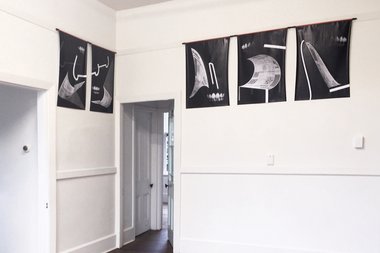
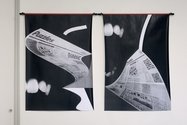
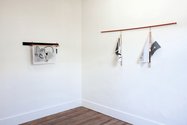
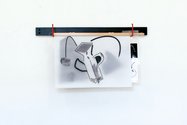
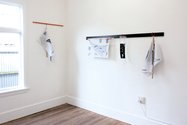

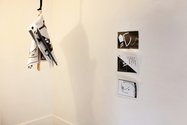

 Two Rooms presents a program of residencies and projects
Two Rooms presents a program of residencies and projects Advertising in this column
Advertising in this column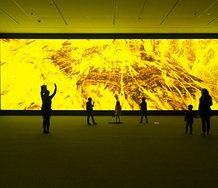
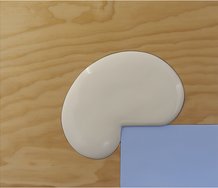
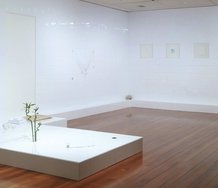

This Discussion has 0 comments.
Comment
Participate
Register to Participate.
Sign in
Sign in to an existing account.